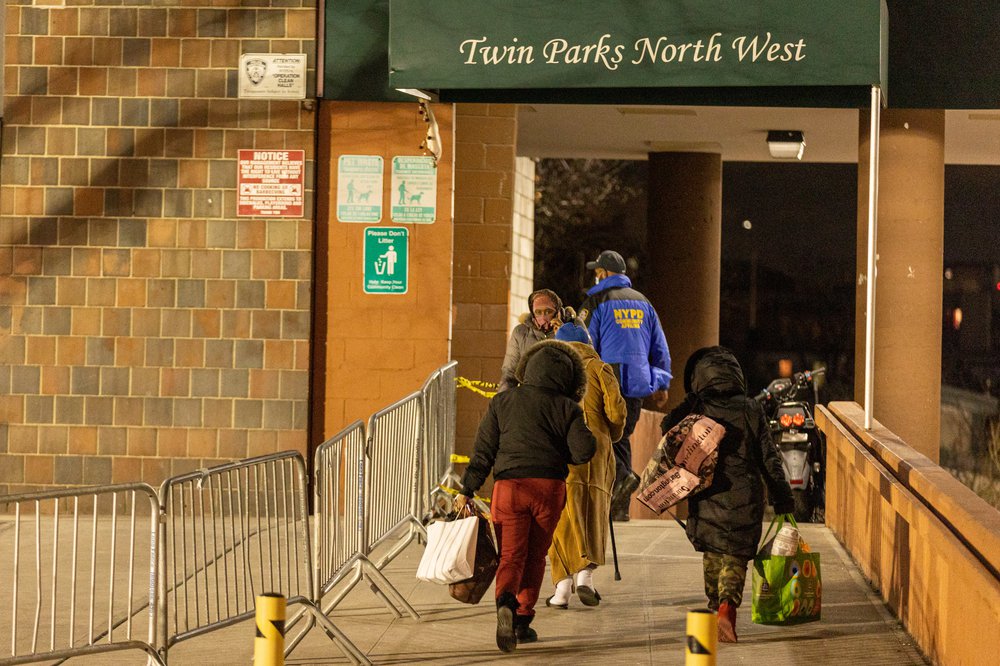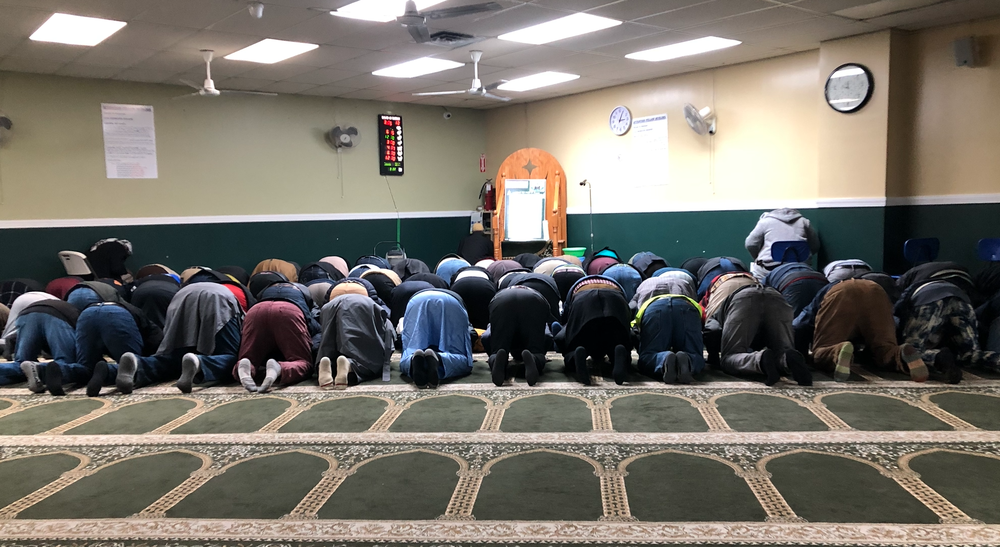"It Cannot Be Imagined" — A Close Community Begins To Grieve After Bronx Fire
Jan. 11, 2022, 6:06 a.m.
Twin Parks North West, where the fire broke out, had long been a center of gravity for the Bronx's West African community.

In the first moments of Sunday morning’s deadly Bronx fire, Mohamed Trawalley stood behind his front door, deciding whether he should take his family and flee their home of nearly a decade.
He heard neighbors above and below him, their faces pressed to windows, gasping for air. Others on his floor would later describe bodies laying motionless in the hallway, overcome with smoke inhalation.
Trawalley, a registered nurse who’d just returned from his overnight shift in the city’s pandemic-plagued hospital system, knew to remain calm. As one of the worst fires in the city’s history unfolded around them, he said he, his wife and his two daughters, aged 8 and 16, remained inside the apartment in quiet prayer.
“Tragedies happen, and when they do, you have to know that you have no control over them,” he told WNYC/Gothamist. “What you have control over is your action during the tragedy.”
Trawalley and his family were unharmed, but the fire at Twin Parks North West in the Bronx’s Fordham Heights section claimed at least 17 lives by Monday morning, seriously injured dozens more and displaced hundreds from their homes. Officials are still piecing together the fire's origins, saying only they believe it was sparked at around 11:00 a.m. by a faulty space heater, and exacerbated by a malfunctioning door that failed to automatically close and contain the smoke.
“It’s the same people who pray with us in this center, and the same children who passed away."
Musa Kabba, imam of the mosque, Masjid-Ur-Rahmah
Like Trawalley, many of his neighbors came to New York from Gambia, finding a home in the community of West African Muslim immigrants that has been steadily growing in the Bronx for decades. Residents and local leaders said many in the building prayed together, ate together, went to school together and now are grieving together.
“It’s the same people who pray with us in this center, and the same children who passed away. They used to come here every Saturday and Sunday,” said Musa Kabba, the imam of the nearby mosque, Masjid-Ur-Rahmah, where Trawalley worships.
Kabba said he feared ten members of the congregation died in the blaze, including several children.

Kabba described the congregation as a close knit community of immigrant essential workers: cab drivers, construction workers and health care employees who hailed from Gambia, Mali, Niger and other West African nations. Outside the squat building on Webster Avenue, fellow congregants consoled a sobbing woman who said she lost her sister.
As of Monday afternoon, most of the adults who died still had not been identified, preventing the congregation from fulfilling the Islamic tradition of burying a body within 24 hours, according to Bakary Camara, a member of the National Islamic Council in the Bronx.
He called the lack of information “mind-boggling,” noting that Mayor Eric Adams had vowed to respect the burial rites of the Muslim residents during a press conference on Monday. Still, Camara, who helped coordinate services at a makeshift Red Cross distribution center nearby, praised the outpouring of support from the Bronx and beyond.
In the aftermath of the fire, bags of donated clothes and food began piling up at intake sites. The Gambian Youth Organization, which typically holds food pantries for neighborhood residents from a small storefront near the site of the fire, sought out to raise $20,000 to help displaced residents. By Monday afternoon, the group had raised more than half a million dollars.
“In hard times it’s literally … showing up for each other and caring for each other,” said Salim Drammeh, the group’s president, adding the money would be paid directly to those affected by the fire, regardless of religion or ethnicity.
Donations exploding at Gambian Youth Organization two blocks from devastating fire - I’ve watched this pile triple in size over the last few hours. pic.twitter.com/jIqGnFwkMb
— Gwynne Hogan (@GwynneFitz) January 10, 2022
As much as the mosque and the youth group served as meeting places, residents said the building itself had long been a center of gravity for the neighborhood’s West African community.
The high-rise, known as Twin Parks North West, opened in 1972 as part of an experimental scatter-site project that tasked well-known architects with designing state-subsidized housing.
The project earned mixed reviews, suffering in part from reports of gang violence. By the early 1990s, as mosques and Gambian enclaves were springing up in the Bronx’s “New Africa,” word of the nearby state-subsidized high-rise spread among the city’s West African immigrants.
Momodou Sawaneh, a 50-year-old engineer who arrived here in 1991, called the building a “sanctuary” for Gambian immigrants like himself, a place where new arrivals could find a welcoming home and learn to build a life in New York.
“When I came here [some of the same] people were living in this building,” he said. “They brought their families, and then to face a tragedy like this. It cannot be imagined.”
The Bronx’s African population has grown significantly in the last few decades: according to census data, there were just over 12,000 sub-Saharan Africans living in the borough in 1990; within twenty years the number had nearly tripled. Throughout that history, deadly fires have been a tragic refrain.
In 2007, eight children and one woman, all of them of Malian descent, were killed in a fire in the Highbridge section of the Bronx.
That was believed to be the deadliest residential fire in New York City since the 1990 HappyLand fire in the Bronx — a distinction now held by Twin Parks. In another echo of Sunday’s incident, officials linked that fire to a malfunctioning space heater.
Two years later, the borough’s Islamic Cultural Center, where thousands had gathered to mourn the loss of the Highbridge families, also burned down during the holy month of Ramadan.
On Monday night, Trawalley, the registered nurse, recalled mourning both fires years earlier, shortly after arriving in the country.
As he sat with his family in a hotel room, awaiting news about whether he could return to his apartment, he said his prevailing thought was of his community’s resilience.
“When something happens in New York, everyone comes together,” Trawalley said. “It’s always been the case since I’ve been here.”